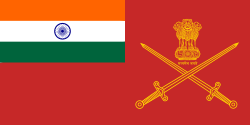| Battalion | Raising Date | Former designations | Battle honours | Remarks |
|---|
| 1st Battalion | 1776 | 13th Carnatic Battalion (1776), 2/3rd Madras Native Infantry (1796), 13th Madras Infantry (1885), 73rd Carnatic Infantry (1903), 11th Madras Infantry ITF (1933), 1st Battalion, The Madras Regiment (1942) | Carnatic, Sholinghur, Mysore, Seringapatam, Burma 1885-87, Mount Popa, Tithwal, Kalidhar | Re-organised as a mechanised infantry regiment in 1969 and joined Mechanised Infantry Regiment in 1979 |
| 2nd Battalion | 1776 | 15th Carnatic Battalion (1776), 2/4th Madras Native Infantry (1796), 15th Madras Infantry (1885), 75th Carnatic Infantry (1903), 2/3rd Madras Regiment (1922 and 1940), 2nd Battalion, The Madras Regiment (1942) | Carnatic 1780-84, Sholinghur, Mysore 1790-92, Afghanistan 1879-80, Burma 1885-87, Mesopotamia 1916-18 | Disbanded in 1926 and re-raised in September 1940 from 12th Malabar Battalion ITF, was a Para battalion between 1946 and 1950 |
| 3rd Battalion | 1777 | 20th Carnatic Battalion (1777), 2/7th Madras Native Infantry (1796), 19th Madras Infantry (1885), 79th Carnatic Infantry (1893), 3rd Battalion Madras Regiment (1922), 1st (Territorial) Battalion, 79 Carnatic Infantry (1922), 13th (Malabar) Battalion, 3rd Madras Regiment (1922), 13th Malabar Battalion ITF (1929), 3rd Battalion Madras Regiment (1941) | Carnatic, Sholinghur, Mysore, Seringapatam, Pegu, Central India, Mesopotamia | Disbanded and re-raised as a Territorial Army battalion in 1922, disbanded in 1950 and re-raised in 1962 |
| 4th Battalion | 1794 | 33rd Madras Native Infantry (1794), 1/12th Madras Native Infantry (1796), 23rd Wallajahabad Light Infantry (1824), 83rd Wallajahabad Light Infantry (1903), 1/3rd Madras Regiment (WLI) (1922), 4/3rd Madras Regiment (1942), ), 4th Battalion (WLI), The Madras Regiment | Seringapatnam 1799, Nagpore, Burma 1885-1887, East Africa, Mesopotamia, Baghdad, Persia, Tamu Road, Ukhrul, Ava, Kama, Punch, Maharajke | Disbanded in 1923, re-raised in 1942 |
| 5th Battalion | 1759 | 4th Battalion, Coastal Sepoys (1759), 3rd Carnatic Battalion (1770), 1/3rd Madras Native Infantry (1796), 63rd Palamcottah Light Infantry (1903), 5/3rd Madras Regiment (1943) | | Disbanded 1922, re-raised 1943, disbanded 1947, re-raised 1963. Nicknamed Ferocious Five |
| 6th Battalion | 1777 | 21st Carnatic Battalion (1777), 2/2nd Madras Native Infantry (1796), 20th Madras Native Infantry (1824), 20th Madras Infantry (1885), 80th Carnatic Infantry (1903), 6/3rd Madras Regiment (1943) | Carnatic, Sholinghur, Mysore, Seringapatnam 1799 , Basantar | Disbanded in 1921, re-raised in 1943, disbanded 1947, re-raised 1963. |
| 7th Battalion | 1798 | 2/14th Madras Native Infantry (1798), 28th Madras Native Infantry (1824), 28th Madras Infantry (1885), 88th Carnatic Infantry (1903), 7/3rd Madras Regiment (1943) | Mahidpore, Nagpore, Ava, China 1900 | Disbanded in 1921, re-raised in 1943, disbanded 1946, re-raised 1964. Nicknamed Shandaar Saat |
| 8th Battalion | 1948 | | | Nicknamed Gallant Guerrillas |
| 9th Battalion | 1704 | 1st Battalion, Nair Brigade (1830), 1st Battalion, Travancore Nair Infantry (1835), 9th Battalion, The Madras Regiment (Travancore) (1948) | Burki, Punjab 1965 | Former Princely State Forces Unit, Travancore |
| 10th Battalion | 1984 | | | |
| 11th Battalion | 1980 | | | Old Territorial Battalion |
| 12th Battalion | 1981 | | | Old Territorial Battalion, nicknamed Bahadur Barah |
| 16th Battalion | 1819 | 2nd Battalion, Travancore Nair Infantry (1819), 16th Battalion, The Madras Regiment (Travancore) (1954) | Basantar | Former Princely State Forces Unit, Travancore |
| 17th Battalion | 1943 | Nair Brigade (1860), Cochin State Infantry (1943), 17th Battalion, The Madras Regiment (Cochin) (1953) | | Former Princely State Forces Unit Cochin |
| 18th Battalion | 1859 | 1st Mysore Infantry (1895), 18th Battalion, The Madras Regiment (Mysore) (1953) | | Former Princely State Forces Unit Mysore |
| 19th Battalion | 1777 | 20th Carnatic Battalion (1777), 1/7th Madras Native Infantry (1796), 19th Madras Native Infantry (1824), 19th Madras Infantry (1885), 79th Carnatic Infantry (1903), 3/3rd Madras Regiment (1922), 19th Battalion, the Madras Regiment (1966) | | Disbanded 1923, re-raised 1942, disbanded 1950, re-raised 1966. |
| 20th Battalion | 2009 | | | Nicknamed The Mighty Twenty |
| 21st Battalion | 2011 | | | |
| 25th Battalion | 1942 | 25/3rd Madras Regiment (1942) | | Raised as a garrison battalion, disbanded in 1946, re-raised in 1966. |
| 26th Battalion | 1942 | 26/3rd Madras Regiment (1942) | Siramani | Raised as a garrison battalion, disbanded in 1946, re-raised in 1967. Nicknamed Tuskers Battalion and Ashok Chakra Paltan |
| 27th Battalion | 1943 | 27/3rd Madras Regiment (1943) | Maheidpore | Raised as a garrison battalion, disbanded 1946. Re-raised 1971. |
| 28th Battalion | 1942 | 3rd Coastal Defence Battalion (1942) | | Raised in 1942, disbanded in 1946, re-raised in 1976 |
| 8 Rashtriya Rifles | | | | |
| 25 Rashtriya Rifles | 1994 | | | |
| 38 Rashtriya Rifles | | | | |
| 54 Rashtriya Rifles | | | | |
| 110th Infantry Battalion (TA) | 1949 | | | Territorial Army battalion situated in Coimbatore, Tamil Nadu |
| 122nd Infantry Battalion (TA) | 1949 | 51st Light Armoured Regiment (TA) (1949), 122nd Infantry Battalion (TA) (1956) | | Territorial Army battalion situated in Kannur, Kerala, was previous affiliated to the Punjab Regiment. |
| 172nd Infantry Battalion (TA) | 2017 | | | Territorial Army battalion situated in Port Blair, Andaman & Nicobar Islands |
|
















